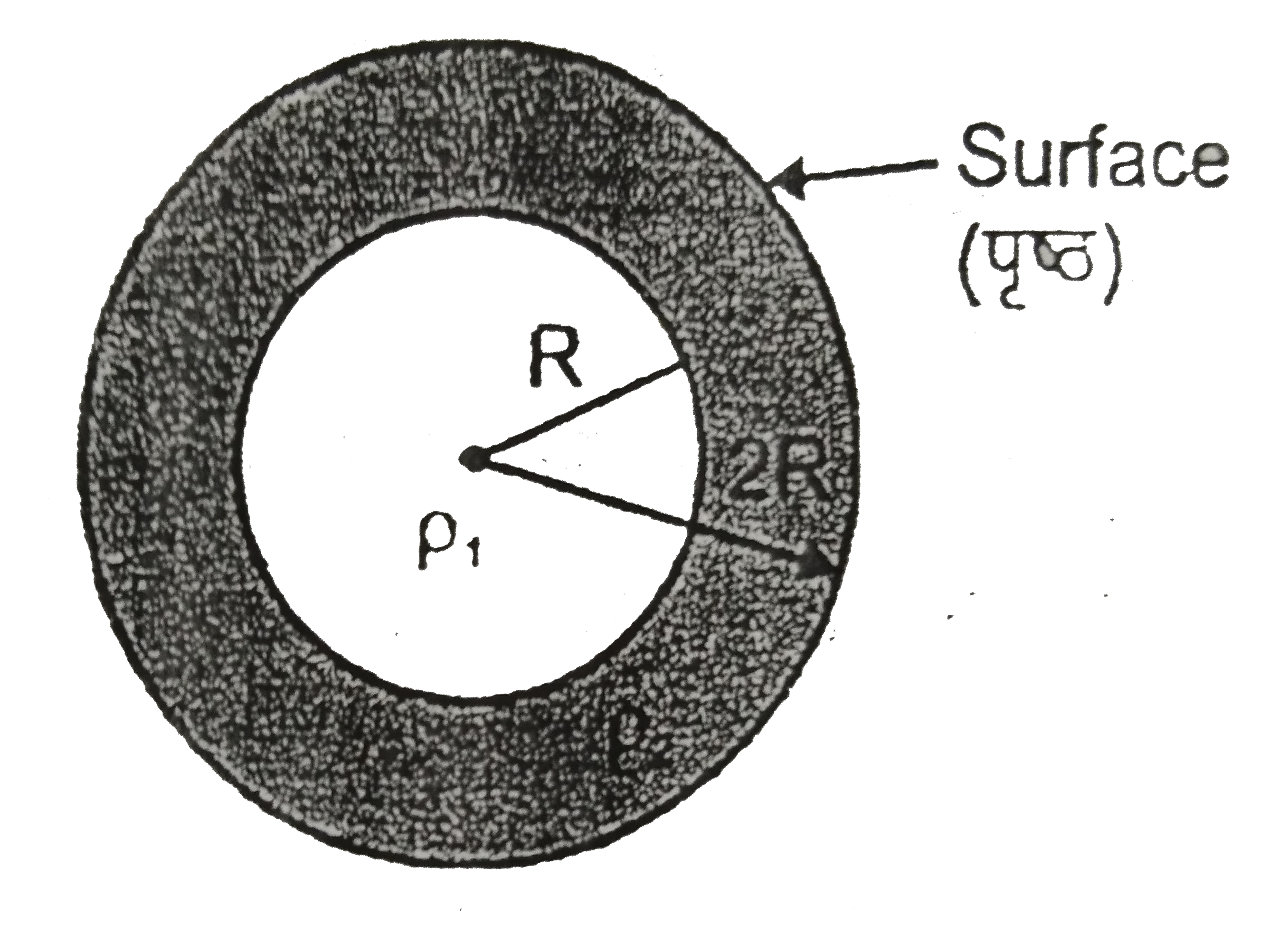The velocity of water waves (v) may depend on their wavelength λ, the density of water ρ and the acceleration due to gravity g. The method of dimensions gives the relation between these quantities as v2=kgxλxρy. The value of x is (Here k is a constant).
To solve the problem, we need to find the value of x in the equation v2=kgxλxρy using dimensional analysis. Let's break it down step by step.
Step 1: Identify the dimensions of each quantity
- The velocity v has dimensions of (LT−1).
- The wavelength λ is a length, so its dimensions are (L).
- The density ρ is mass per unit volume, so its dimensions are (ML−3).
- The acceleration due to gravity g has dimensions of (LT−2).
Step 2: Write the dimensional equation
We start with the equation:
v2=kgxλxρy
Taking dimensions on both sides, we have:
(L2T−2)=(k)(LT−2)x(L)x(ML−3)y
Step 3: Expand the right-hand side
Now, we expand the right-hand side:
(L2T−2)=(k)(LxT−2x)(Lx)(MyL−3y)
Combining the dimensions, we get:
(L2T−2)=(k)(MyLx+x−3yT−2x)
This simplifies to:
(L2T−2)=(k)(MyL2x−3yT−2x)
Step 4: Equate the dimensions
For the equation to hold true, the dimensions on both sides must match. This gives us three equations:
1. For mass M: y=0
2. For length L: 2=2x−3y
3. For time T: −2=−2x
Step 5: Solve the equations
From the third equation:
−2=−2x⟹x=1
Substituting y=0 into the second equation:
2=2x−3(0)⟹2=2x⟹x=1
Conclusion
Thus, the value of x is 1.
Final Answer
The value of x is 1.
---
- The velocity v has dimensions of (LT−1).
- The wavelength λ is a length, so its dimensions are (L).
- The density ρ is mass per unit volume, so its dimensions are (ML−3).
- The acceleration due to gravity g has dimensions of (LT−2).
We start with the equation:
v2=kgxλxρy
Taking dimensions on both sides, we have:
(L2T−2)=(k)(LT−2)x(L)x(ML−3)y
Now, we expand the right-hand side:
(L2T−2)=(k)(LxT−2x)(Lx)(MyL−3y)
Combining the dimensions, we get:
(L2T−2)=(k)(MyLx+x−3yT−2x)
This simplifies to:
(L2T−2)=(k)(MyL2x−3yT−2x)
For the equation to hold true, the dimensions on both sides must match. This gives us three equations:
1. For mass M: y=0
2. For length L: 2=2x−3y
3. For time T: −2=−2x
From the third equation:
−2=−2x⟹x=1
2=2x−3(0)⟹2=2x⟹x=1
Thus, the value of x is 1.
The value of x is 1.
Topper's Solved these Questions
- BOOK - DISHA PUBLICATIONCHAPTER - CHAPTERWISE NUMERIC /INTEGER ANSWER QUESTIONSEXERCISE - CHAPTER -2 (Motion in a Straight Line)15videos
CHAPTERWISE NUMERIC /INTEGER ANSWER QUESTIONS
- BOOK - DISHA PUBLICATIONCHAPTER - CHAPTERWISE NUMERIC /INTEGER ANSWER QUESTIONSEXERCISE - CHAPTER -3 (MOTION IN PLANE)15videos
CHAPTERWISE NUMERIC /INTEGER ANSWER QUESTIONS
- BOOK - DISHA PUBLICATIONCHAPTER - ATOMSEXERCISE - EXERCISE-2: CONCEPT APPLICATOR30videos
ATOMS
- BOOK - DISHA PUBLICATIONCHAPTER - COMMUNICATION SYSTEM EXERCISE - EXERCISE-2 : Concept Applicator30videos
COMMUNICATION SYSTEM
Similar Questions
Experiments reveal that the velocity v of water waves may depend on their wavelength λ, density of water ρ, and acceleration due to gravity g. Establish a possible relation between vandλ,g,ρ.
View SolutionThe buoyant force F acting on a body depends on the density of medium ρ, volume of body immerese V and acceleration due to gravity g. Establish the relation using method of dimensions.
View Solution
Knowledge Check
- Question 1 - Select One
The velocity v of waves produced in water depends on their wavelength λ, the density of water d, and acceleration due to gravity g. These quantities are related as (where k is a dimensionless constant)
Av2=kλ−1g−1d−1Bv2=kλgCv2kλdgDv2λ3g−1d−1 - Question 2 - Select One
The velocity of water wave v may depend on their wavelength λ, the density of water ρ and the acceleration due to gravity g. The method of dimensions gives the relation between these quantities as
AV2∝gλBV2∝1gλCV2∝1gdDV2λgλd - Question 3 - Select One
The largest mass (m) that can be moved by a flowing river depends on velocity (v), density (ρ) of river water and acceleration due to gravity (g). The correct relation is
Am∝ρ2v4g2Bm∝ρv6g2Cm∝ρv4g3Dm∝ρv6g3
The resistance R to the motion of a ship depends on the velocity v of the ship, l the length of ship, ρ the density of sea water and g the acceleration due to the gravity.Show that R is proportional to l3.
View SolutionThe mass m of the heaviest stone that can be moved by the water flowing in a river depends on speed (v) of water, density (d) of water and the acceleration due to gravity (g). Find the dimension of velocity on which mass of stone depends.
View SolutionA planet is made of two materials of density ρ1 and ρ2 as shown in figure. The acceleration due to gravity at surface of planet is same as a depth 'R'. The ratio of ρ1ρ2 is x3. Find the value of x.
 View Solution
View SolutionThe velocity of the waves on the surface of water is proptional to λaρβgγ where λ = waver length, ρ = density and g =m acceleration due to gravity. Which of the following relation is correct?
View SolutionAssuming that the mass m of the largest stone that can be moved by a flowing river depends upon the velocity v of the water , its density ρ , and the acceleration due to gravity g . Then m is directly proportinal to
View Solution

